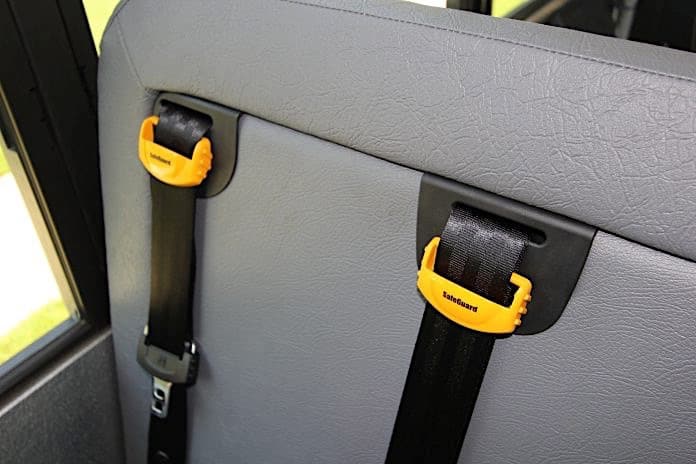The Aspen Times reported that the Aspen School District of Colorado removed all seat belts from its largest school buses during the past month and a half because of safety concerns, officials said.
“Lap belts can be more damaging to the human body in frontal accidents than none at all,” said Gary Vavra, the district’s transportation director. “For the safety of the children, … we decided it was safer to take them off than leave them on there.”
The district owns 22 large buses, which came equipped with lap belts, as opposed to three-point shoulder seat belts, he said. It would cost the district $15,000 per bus to retrofit them with the shoulder restraints, he said.
Large school buses are designed to be seven times safer than passenger cars or light trucks, according to the National Highway Traffic Safety Administration. Such buses protect passengers through a concept called “compartmentalization,” which provides a “protective envelope consisting of strong, closely-spaced seats that have energy-absorbing seat backs,” according to the NHTSA’s website.
“This requires that the interior of large buses provide occupant protection such that children are protected without the need to buckle-up,” according to the website.
Lap belts on young children fall across the abdominal area and can result in internal injuries in the event of a crash, according to information in a 2006 Colorado Department of Education resolution about lap belts in school buses. Additionally, lap belts only restrain older or taller students at the hips, which can result in serious head, neck or spinal injuries in the event of a severe frontal crash, according to that information.
The only time lap belts are effective is when they are used to secure infants, toddlers, preschoolers and students with special needs in a child-safety system like a car seat or safety vest, according to information included with the 2006 resolution.
Vavra said less than 1 percent of Aspen School District students who ride the bus used the lap belts. A higher percentage, however, used them as a weapon to hit other students with, he said, which was another mark against the lap belts.
A school bus is expected to last about 20 years, Vavra said. Buses in Aspen School District’s current fleet are all less than 20 years old, he said. The district’s last bus purchase occurred in 2015 for a bus with lap belts, he said.
“From now on, I would recommend that new buses have three-point seat belts,” Vavra said.
The private Aspen Country Day School operates four full-sized buses, according to an email from Steven Miller, the school’s transportation director.
Three of those buses—which serve routes in Snowmass Village, Woody Creek/Cemetery Lane and downtown Aspe—are equipped with lap belts, he said. The fourth, which transports students to and from Carbondale and the mid-valley, is equipped with three-point shoulder seat belts, he said.
All four buses are constructed following the compartmentalization concept, Miller said.


















